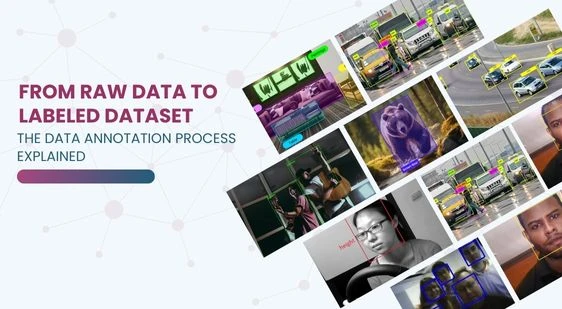Introduction
Artificial intelligence (AI) and machine learning are parts of the modern hi-tech industry. On these technological wonders, the role data plays takes a special place. For this technology, the data used requires the use of the so-called “labeled data” that is plagued. Labeled data is a way AI starts learning more like a map telling it what to do. However, that question arises around something you don’t actually know, such as how is the use of this data even as it is “labeled information” that AI then depends on? This is what data annotation, in fact, does. These tasks are done to incorporate the data with suitable annotations.
What is Raw Data?
Raw data, also known as unpolished data, is essentially the data that is collected prior to any data processing and storage. It is formed through the collection of data by human involvement, by sensors, or other means like text or voice. A good example of this is a cat picture which is the raw data. But, if a machine learning system is to learn the image as a cat, then it is important that the data be labeled, in the first place, as a cat.
Understanding Data Annotation
Data annotation is the procedure of assigning tags to the data in its original state. These tags give AI systems the ability to interpret the data. Think of it as if you were training a kid to identify fruits. You would just point to the apple and say, “This is an apple.” The same way, with the use of data annotation, an AI machine knows what each piece of data is.
Types of Data Annotation
- Image Annotation: To help AI machines identify the items in an image, one should use image annotation. This could be done by means of circling an object and captioning it, for instance, when you mark a cat in a photograph as “cat”.
- Text Annotation: For AI to grasp the language, text annotation is made. In this case, instances like highlighting words or phrases and labeling them may be typical, such as pointing out “the New Delhi” as a “location” in the sentence.
- Audio Annotation: Audio files are labeled when AI learns to recognize speech or sounds. For example, one could name a particular clip with “a dog barking” or “a car horn.”
The Annotation Process
- Collection: First, the data collection process is initiated through the receipt of objective information from different sources. The raw data could be images, texts, videos, or sounds.
- Annotation: After the collection of the data has been done, the labeling phase is carried out by annotators that are either humans or AI tools. The annotators might draw boxes around objects, highlight text, or tag sounds.
- Quality Check: The whole process of labeling is examined to ensure that the labeling is accurate. Thus, ensuring that the labeling is properly done is very important because incorrect labeling may be followed by the AI machine, and therefore it will be provided with wrong information.
- Final Dataset: Finally, the data that has been accurately labeled and reviewed is called a labeled dataset. It becomes the input for training AI systems.
Why is Data Annotation Important?
Data labeling is what AI requires to be taught and know how to extract and understand the data. If there is no label, AI systems could experience a teaching difficulty that malfunctions. Which can be the wrong teaching for them and the program will have the wrong decision if a picture of a dog is labeled as a cat for example, they might think that all dogs are cats.
Conclusion
The process of curating raw data into a labeled dataset is a crucial step within the AI training. Data labeling is the major driver for learning the right data by AI systems, which consequently leads to higher accuracy and better performance. Data annotation paves the way to AI that is more insightful and versatile, be it image recognition, language understanding, or sound interpretation. The concept of data annotation is about connecting AI to the real world.







